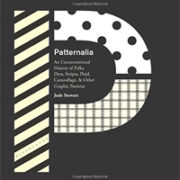The Art of Gathering by Priya Parker
”THE ART OF GATHERING” is PRIYA PARKER‘s gift to those wanting to put together a successful and memorable gathering. She has used her years of field work to create a guide for planning and hosting more authentic and people-centered gatherings.
According to Parker, gathering “is the conscious bringing together of people for a reason” and she feels event planners and hosts have a responsibility to think outside the box and create something meaningful and unforgettable. She believes that the “way a group is gathered determines what happens in it and how successful it is; the little design choices you make can help your gathering soar.”
What makes this book special is Parker’s unique experience. She is an expert in conflict resolution and has planned events for leaders from around the world, so she has had a lot of practice in bringing people together. In this one-of-a-kind offering, she translates her passion around gathering into eight concise chapters that teach the reader the highlights of gathering.
To say Parker is a frequent host is an understatement. She is almost always planning an event or is being invited to a gathering. This allows her to give numerous examples of successful events and, more importantly, examples of lackluster or failed gathering. She talks frequently of what parts of her gatherings have not been successful and the things she has done to remedy the issues either during the gathering or at future gatherings. Readers can tell that she is constantly observing all the gatherings she attends for ideas and ways to strengthen her own events.
Chapters are focused on such topics as:
1. Determining if a gathering is necessary.
2. Being selective during the invite process.
3. Being a generous host.
4. Creating a temporary world for guests
5. Logistics are not the way to start an event
6. Being vulnerable both as a host and an attendee
7. Creating a little controversy can make some gatherings more interesting.
8. Ending the gathering in an appropriate way.
Key takeaways for me:
• The event is not the be all, end all. Start “priming” guests well before any gathering. Parker suggests naming the gathering in a way that suggests expectations, and reaching out between the invitation and the gathering.
• Create an alternate world (it can be simple, with ground rules that exist only during the gathering) and welcome guests across a “threshold” into that newly created world.
• Logistics should not be covered first. Her chapter title, “Never Start a Funeral With Logistics” and the example of the funeral director giving parking instructions while people are weeping for their loved one, further drives this point home.
• Foster authenticity and vulnerability among guests; hosts should help lead the way with their own vulnerability.
• A gathering’s final moments “should be authentic” and hosts should prepare their guests for reentering the real world after the gathering is finished.
The only chapter that I struggled with was “Creating a little controversy can make some gatherings more interesting.” In this chapter, Parker talks about incorporating “good controversy” into gatherings. While we often hear other experts saying we should not air our differences of thought on certain subjects, such as politics and religion, at gatherings, Parker disagrees. She does not advocate talking about hot button topics willy-nilly and writes that they need to be “designed for and given structure” with a plan for adding some “heat” to gatherings without letting them “burn up in flames.” And the end goal must be worth the discomfort the controversy brings.
She shares several examples of incorporating “good controversy,” with the most interesting being a “cage match” style debate session for a design firm she was working with. This controversy added a fun, passionate and helpful element to the gathering and in turn helped the participants make a pivotal work decision that they had been dancing around. It was her ability to plan for and manage the controversy that made it work. This might be harder for inexperienced hosts, which is why I may have struggled with this chapter.
As a whole, Parker has created a well-written and compelling guide. As I work to plan gatherings, I find myself thinking about her book and what she would suggest for each element. I am eager to continue to practice her suggestions and make the gatherings I am a part of more authentic and distinctive. This book is a must read for anyone planning a gathering — weddings, meetings, conferences, funerals, birthday parties, dinners, etc. No matter the size or scope of the event, there is something for everyone.










